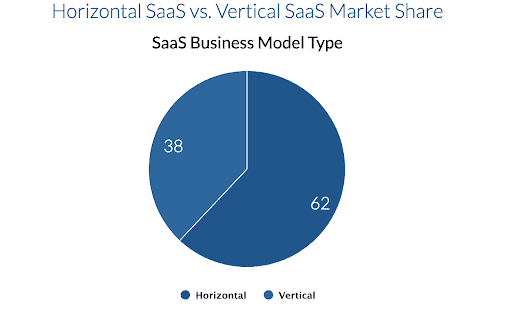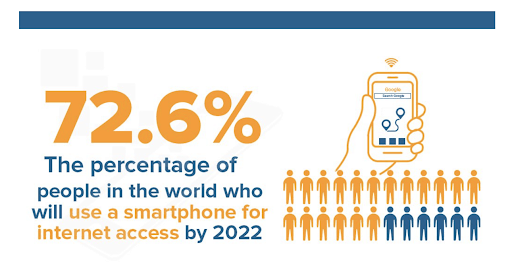Contents
The SaaS industry has been continuously growing during the last ten years. The COVID pandemic accelerated its growth and gave hundreds of SaaS companies opportunities to find their free spot in the saturated market. The changing environment entails the shift of business focus towards areas experiencing high demand. Economic, cultural, and social transformations were reflected in the SaaS trends that are expected to grow fast in the coming few years. Let’s walk through the most significant ones.
Vertical SaaS
Along with cloud computing’s rapid development, many businesses started to search for an industry-specific solution addressing particular pain points in their realm. Vertical SaaS product focuses solely on a certain domain that ensures a deeper understanding of customer needs and more customized offerings.

One of the Vertical SaaS examples is a church management software that is designed to enable digital giving to support churches’ financial needs when congregants can’t physically put their donations in the collection plate. A vertical SaaS specifically developed for churches can include features which can be used to an advantage in terms of specialised features for donations, memberships, event organisation, and logistics such as finances and data management. In using software developed for a particular sector, business, or in a religious corporation in this instance, this can increase efficiency, lead to cost savings, scalability, and facilitate collaboration and connectivity.
Mobile optimization
During the COVID-19 pandemic, many SaaS vendors adopted a mobile-first approach. They focused on developing mobile applications suitable for business purposes and accessible for people with situational impairments or permanent disabilities. Thus the greatest attention is currently paid to mobile application design and functionality.
What exactly is going to be improved in 2021 mobile applications:
- Leveraging of augmented and virtual reality capabilities
- Inclusivity enhancement making mobile apps accessible for people with hearing, sight, and mental disabilities
- Facilitation of learning for people with dyslexia and other learning difficulties
- Responsiveness improvement, including one-swipe functionality and intuitive gestures
- Mobile app personalization empowered by machine learning and AI

AI and Machine learning
These two influential SaaS trends are now at the top of their popularity, becoming more and more widespread. The AI value is in business process optimization and automation of routine tasks, leading to effectiveness and productivity increase. While society is concerned about whether AI will replace humans soon, AI-powered solutions support human capabilities providing a higher level of service by processes’ automation and personalization in various industries.
What are the most valuable AI capabilities?
- AI-powered SaaS speeds up internal business operations by quick data analysis, usage of patterns, and forecasting
- Natural language processing (NLP) processes human speech, reveals patterns, and allows to customize communication with customers by a better understanding their needs
- Automated onboardings and live chatbots enhance responsiveness and reporting capabilities gathering critical customer information
- AI automation and machine learning enable quick identification of cyber threats and help improve digital products’ security
Heading to PaaS
One more 2021 SaaS trend is increasing platform-as-as-service (PaaS) popularity. Under the tough market competition, SaaS vendors are trying hard to acquire customers and then retain them as clients can easily switch to competitors the other day. This situation pushed SaaS companies to think about how to make customers stay with their product for longer. PaaS is a solution enabling clients to develop or purchase applications as add-ons to the initial product. This way, SaaS businesses demonstrate a personalized approach. Being a flexible and accessible model, PaaS gives customers the possibility to scale their businesses easily. Also, PaaS ensures security which is a high priority for businesses of any size.
Salesforce is the top-of-mind example of a SaaS company moving towards migration to PaaS.
Unbundling
The full name of this trend is an API-based unbundling business model. If “traditional” SaaS platforms are horizontal, meaning they offer all the functionalities possible in one tool, newly-born startups go another way. They break their services into core features and deliver to customers only these main functionality and an opportunity to get extra options upon the necessity.
This approach help clients save money not paying for features they never use and choosing needed functions once their business scale. The unbundling strategy seems beneficial for SaaS businesses and their customers as it will bring more value and reduce unjustified expenses.
Micro-SaaS
You can imagine micro-SaaS products like small satellites turning around a big planet. At its core, a micro-SaaS is a tool designed for an individual or a small team to accomplish a particular task. Strictly speaking, extensions, add-ons, plugins, and complementary accessories to other platforms can be attributed to micro-SaaS.
Micro-SaaS projects usually don’t require huge investments and can be developed without fundings. Creating micro-SaaS solutions became a kind of normal practice for digital nomads who want to run their small businesses without being attached to a certain location or team. Relatively low overheads, high margin, and independence make this SaaS business model attractive to many digital entrepreneurs.
Low-code capabilities
In a rapidly changing environment, there is no time for spending months on SaaS products’ development. No-code or low-code capabilities imply you can build your product faster by implementing already existing solutions that are adjustable to your industry. For example, building a website based on Webflow will help make your content live with less technical effort. The no-code trend doesn’t mean you won’t need programmers anymore. On the contrary, using low-code easily-deployed solutions will encourage your team to focus more on engineering and innovations.
With the help of low-code capabilities, new companies can enter the market much faster than before, meaning more solutions appear in the SaaS industry.
Conclusion
2021 SaaS trends are all about improvements, facilitation, and speed. The new world we all found ourselves in after the burst of the COVID-19 pandemic dictates new rules which SaaS businesses attempt to adapt to. By being aware of these trends, you will be able to keep your finger on the pulse of the industry, get valuable business insights, and make balanced decisions on your further business development. As more and more companies are moving to the cloud, we can expect continuous growth of the SaaS industry and overall digital solutions.
As a co-founder of Salesforce said, businesses should not just react to what customers want (as it’s a reactive approach) but anticipate customers’ needs being far-sighted and proactive.

